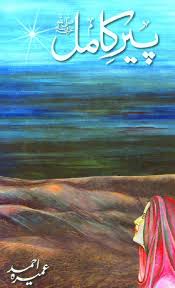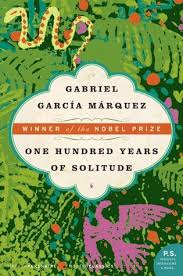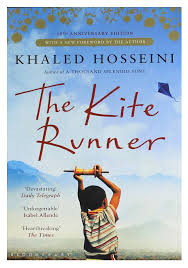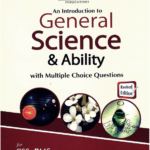Description
A poignantly affecting debut novel by Zoulfa Katouh, fusing magical realism with elements of historical fiction, “As Long As the Lemon Trees Grow” will find its setting in a war-torn Syria as it defines loss and trauma confrontation for a young woman facing hope in the face of a brutal Syrian civil war. Most of all, the book is very emotional and evocative about what it means to survive or resist when someone has been a witness to overwhelming violence and catastrophe.
Summary: 1. Plot Overview:
Salama Kassab, 18 years old, is a Syrian girl whose life has been turned topsy-turvy by the all-out outbreak of the Syrian Civil War. She is a former student pharmacist with bright visions for the future, and the prospects are unclear for this young woman, who now works in a hospital in the besieged city of Homs, helping doctors treat wounded patients and helping the civilian population. She may also be consumed by grief over the untimely deaths of her family members except her pregnant sister-in-law, Layla.
Survivor’s Guilt and Inner Conflict: Salama is tormented with her memories and the traumas of war. She becomes confused with illusions of a phantom figure known as Khauf-the word for “fear” in Arabic and interpreted to represent her inner conflict and confusion. Khauf is always telling her to escape Syria to save herself and the unborn child of Layla. Yet, Salama is out of choice between the urge to flee to Europe in search for a better life, her unrelenting love for the homeland, as well as her guilt towards those whom she is leaving behind and are still suffering.
Love and Rebellion: In this chaos, Salama meets Kenan, a young man determined to film what is happening in Syria, all the atrocities of war that no one can lose. Inspired by Kenan’s intention toward his country, Salama falls in love. They face immoral dilemmas on whether they should leave Syria or stay and try to help others, dealing with the increasing dangers surrounding them.
The story holds it together throughout the novel as survival, hope, and resistance are explored within a broader context, while there is always the question: What is to be found in beauty, meaning in life, even amid all that’s been devastated?
2. Themes:
At the center of this narrative is the all-invasive Syrian Civil War, hence its destruction on civilians. Survival is bound to take a physical and emotional toll on Salama as she navigates to find a way through her survivability against the loss situation that she face daily. The novel was able to capture war horrors but at the same time has been able to underpin the human resilience even in the face of destruction.
Hope and Despair. I think the heart of this book can easily be described as the play between hope and despair. After character after character- from Salama to Kenan-they find themselves meeting aspects of beauty, love, and a reason to carry on living amidst oceans of blood and pain. Lemon trees, which stood for life and a symbol of hope, crop up throughout reminding the reader that even amidst all the conflict of war, there will always be hope to sustain.
The war within: The story is also able to convey that within Salama are grief and trauma that emotionally weigh her down to be alive. Her hallucinations of Khauf represent her inner struggle, fear, guilt, and the haunting memories of her lost loved ones. The novel mainly dwells deep into the psychological impact left by war on people.
Love and Family: As the bond between Salama and Layla develops, and more importantly, as his romance with Kenan flourishes, the story takes an emotionally human angle. But at the same time, the dangers of war create complicated bonds that make them a source of energy and motivation for Salama to fight for the future beyond war.
Resistance and Patriotism: It portrays the difficulty of leaving one’s homeland while war prevails over it. For Salama, the choice between escaping Syria or staying behind to support is not a selfish choice but reflects her sense of love toward her country and a feeling of duty toward those left there to suffer. It is to discuss and explore the dilemma of choosing resistance or flight.
Character Development:
Salama Kassab: Salama is a very conflicted protagonist, trying to figure out who she is: a survivor, a caregiver, or a young woman with more responsibility on her shoulders than any teenager should bear. Her growth in the book is also learning to deal with her grief, inner strength, and how she balances surviving and resisting. Her love for her country and her internal conflict with guilt makes her a complexly interesting character.
As the love interest to Salama, the protagonist Kenan has represented the theme of resistance. He is a passionate war reporter who documents and commemorates the memories of those fallen. His deep love for Syria and his unwavering dedication to it project into his work on reporting during the war. He spends immense time exploring Salama’s emotional life and the choices they have to face about the future they are willing to fight for.
Khauf Symbol: Khauf is the symbolization of Salama’s fear. He is hers; the anxieties, horrors, and compulsion to run define him. His presence in the novel is a metaphor for inner turmoils while making impossible choices to survive in warfare.
4. Symbolism:
Lemon trees: they are important in their dimension of symbolizing hope, life, and survival. Their growth was not checked by the war; thus, they stood testimony to the idea of survival in spite of conditions most adverse that had to be endured and survived. These lemon trees symbolize Salama’s link to her homeland and hopes for settling into a future beyond the war.
Khauf: Khauf becomes the constant harbinger of fatal dangers that surround Salama and the burden of past tragedy. He is a reification of the psychological effects that the war has on Salama, and with his presence, Salama is constantly forced to come up against her greatest fears.
5. Context:
The book is set against the backdrop of the Syrian Civil War, which broke out in 2011 and has since resulted in one of the most devastating humanitarian crises of the 21st century. Millions of Syrians have been forced to leave their homes, and there has been enormous loss of life. Zoulfa Katouh brings into focus in the novel the human cost of this conflict, with particular focus on the innocents caught in the crossfire. The writer from that story tries to portray how the war has affected the emotional, psychological lives of the ordinary people besides the physical and material effects.
6. Writing Style and Tone:
However, very crucial to the novel are the magical realism elements present in the interactions with Khauf as Salama delves into the inner workings of her mind and the surrealist sense of living through a war. This brings the novel almost to a dreamlike status, even when dealing with horrible, brutal subject matter.
There seems to be some lyrical prose in Zoulfa Katouh’s writing, a flow that very vividly paints the beauty and destruction happening in Syria. It’s all about rich descriptions and a thoughtful tone-like Salama took every reader with him on his travels.
Conclusion
“As Long As the Lemon Trees Grow” is at once a searingly powerful and heart-wrenching novel that breathes into these pages all the horrors of war but also celebrates the resilience of the human spirit. Katouh masterly explores in this novel the themes of survival, trauma, love, and hope in unimaginable suffering through Salama’s journey. The novel is very personal and poignant in the portrayal of Syria’s civil war, keeping in the reader’s mind human faces behind those headlines and how, for all the darkness, hope remains.










Reviews
There are no reviews yet.